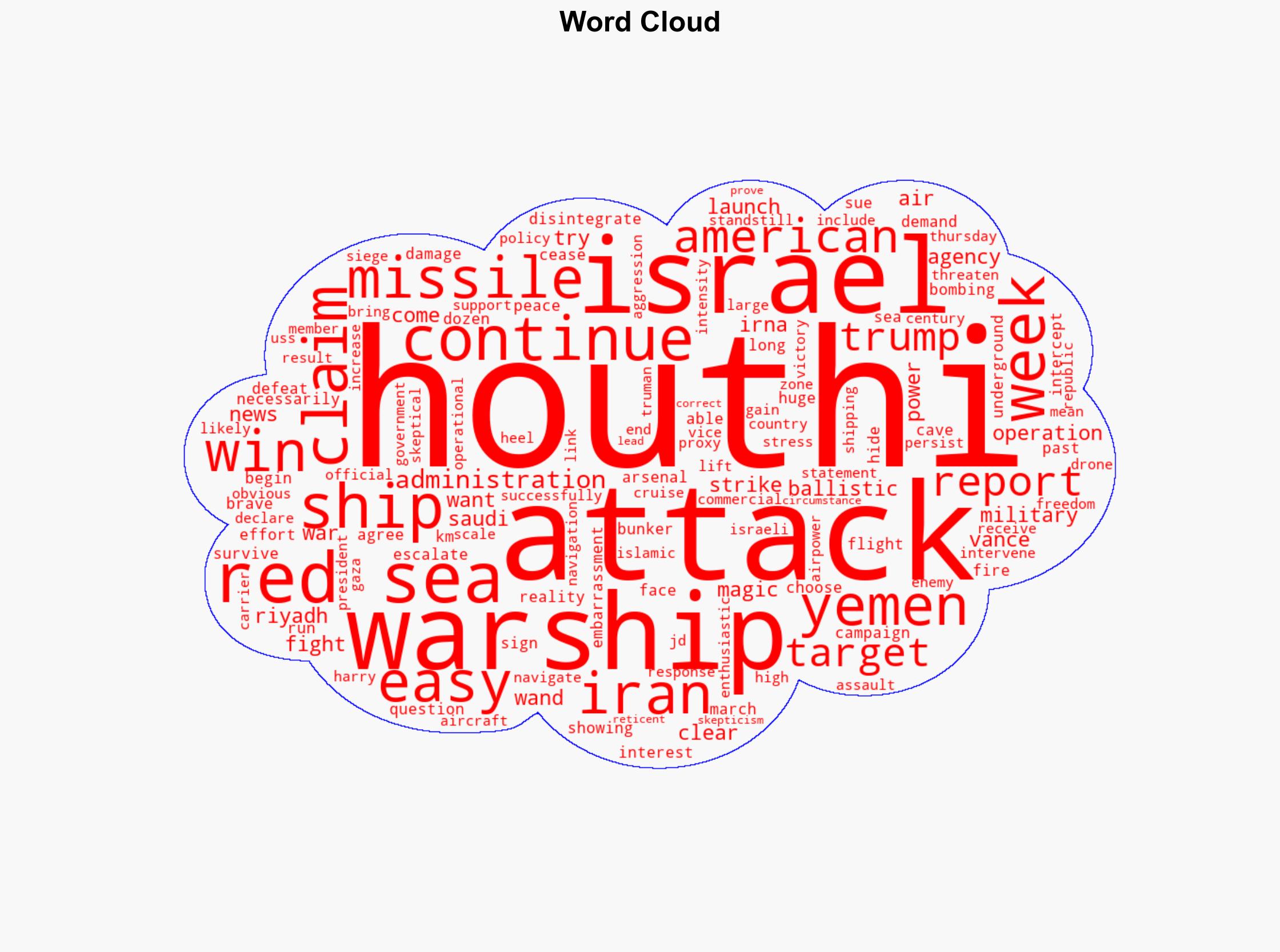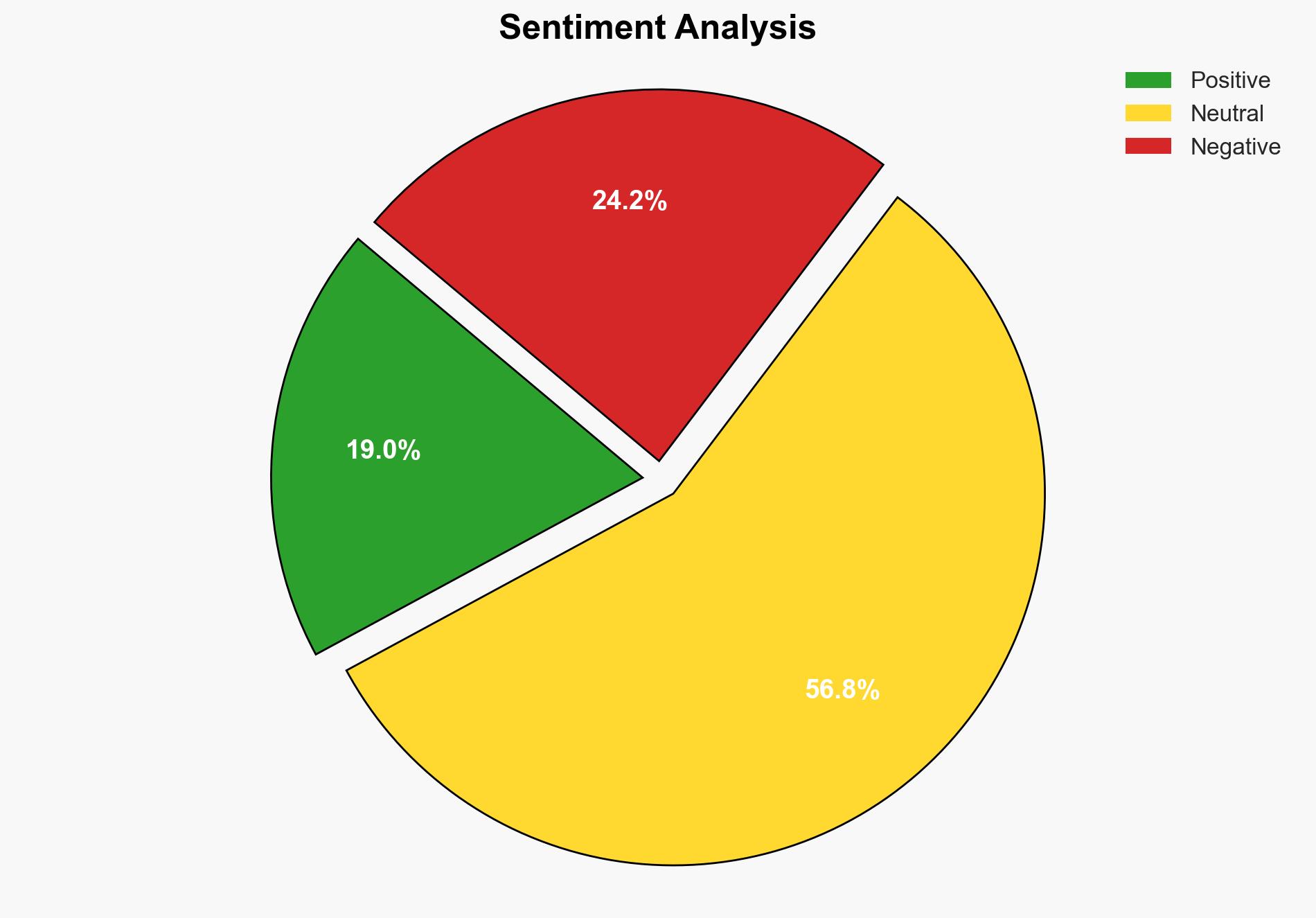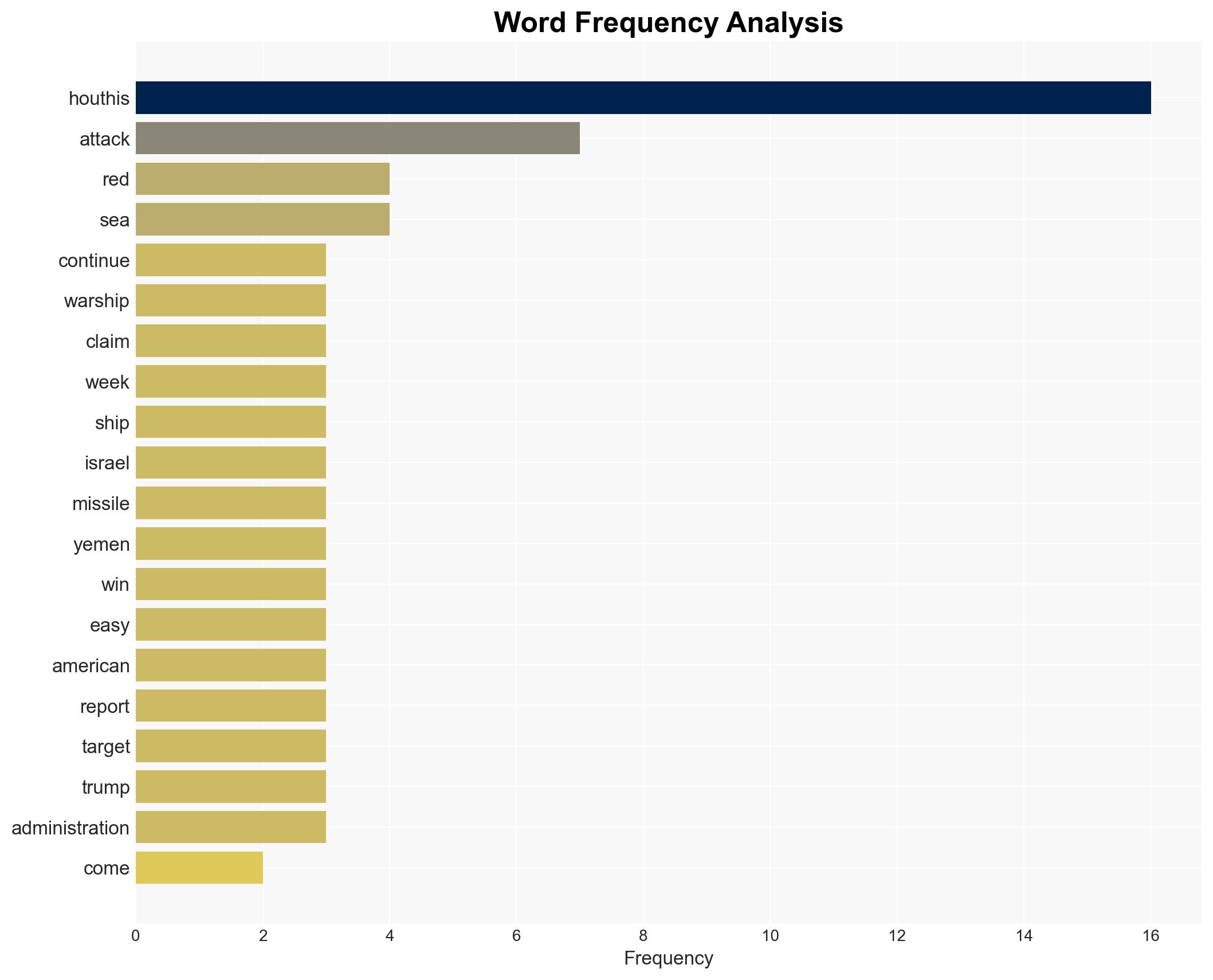After two weeks of war Houthis show no sign of surrender – The Jerusalem Post
Published on: 2025-04-03
Intelligence Report: After two weeks of war Houthis show no sign of surrender – The Jerusalem Post
1. BLUF (Bottom Line Up Front)
The Houthis continue their aggressive stance in the ongoing conflict, showing no signs of surrender despite significant military pressure. Their persistent attacks on maritime targets in the Red Sea, including American and Israeli vessels, indicate a strategic focus on disrupting international shipping and asserting regional influence. The Houthis’ actions are likely influenced by external support, complicating efforts for a swift resolution. Immediate diplomatic and military strategies are recommended to address the escalating threat and protect regional stability.
2. Detailed Analysis
The following structured analytic techniques have been applied for this analysis:
General Analysis
The Houthis have maintained a robust offensive posture, launching ballistic missiles and drones targeting maritime assets. Despite the interception of these missiles, their continued efforts suggest a strategic aim to challenge regional powers and disrupt international maritime routes. The Houthis’ resilience can be attributed to their tactical use of underground facilities and external support, notably from Iran. This support enables sustained operations against superior military forces, complicating direct military solutions.
3. Implications and Strategic Risks
The ongoing conflict poses several strategic risks, including:
- National Security: Increased threat to maritime security in the Red Sea, impacting global shipping lanes and energy supplies.
- Regional Stability: Potential for broader conflict involving regional powers, exacerbating existing tensions in the Middle East.
- Economic Interests: Disruption of trade routes could lead to increased shipping costs and insurance premiums, affecting global markets.
4. Recommendations and Outlook
Recommendations:
- Enhance naval patrols and surveillance in the Red Sea to deter further Houthi attacks.
- Engage in diplomatic efforts to de-escalate tensions, involving key regional stakeholders and international bodies.
- Strengthen intelligence-sharing mechanisms among allied nations to better anticipate and counter Houthi strategies.
Outlook:
Best-case scenario: Successful diplomatic interventions lead to a ceasefire and negotiations, reducing regional tensions.
Worst-case scenario: Escalation of hostilities results in broader regional conflict, severely impacting global trade and security.
Most likely outcome: Continued low-intensity conflict with periodic escalations, necessitating ongoing international monitoring and intervention.
5. Key Individuals and Entities
The report mentions significant individuals and organizations, including Houthis, Iran, and Trump. Their roles and affiliations are critical to understanding the dynamics of the conflict but are not detailed in this report.





